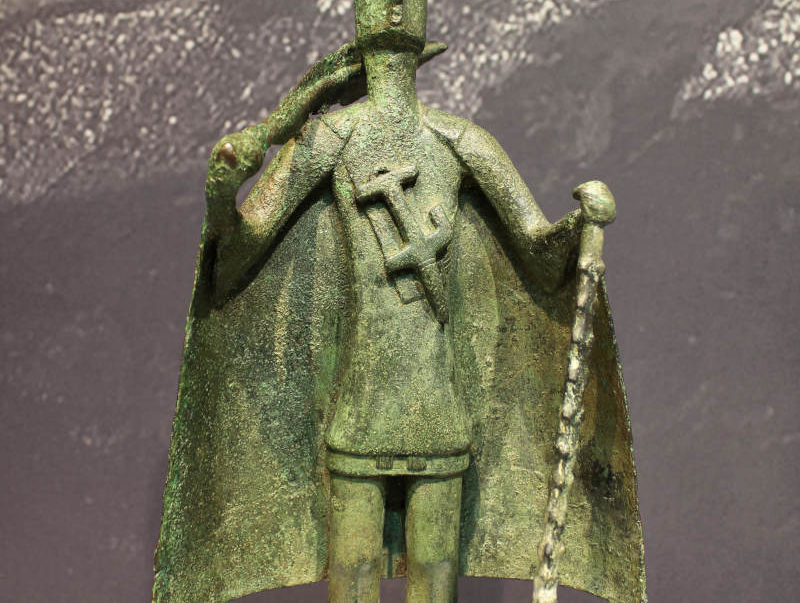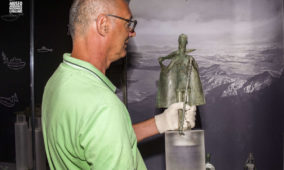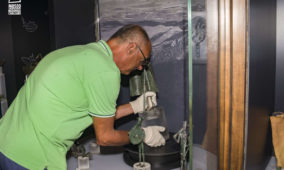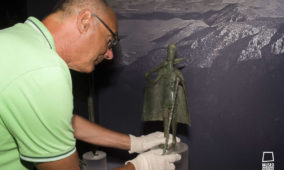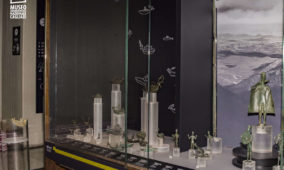Corpo Pagina
Culture does not stop and even the National Archaeological Museum of Cagliari joins to the campaign of the MIBACT #iorestoacasa which offers a rich cultural offer that can be enjoyed comfortably from home.
We continue to show you some of the most important finds exhibited in the museum showcases. Today our subject is the large nuragic bronze statue depicting a chieftain from the Monte Arcosu locality, now a protected mountain oasis in the territory of Uta a few tens of kilometers from Cagliari.
The little bronze with its height of 40 centimeters definitely surpasses the other Nuragic figurines. The depiction is typical of the so-called chieftain with double tunic, large cloak, headgear with cap, stab with a hilt-shaped hanging from the bandolier and stick. Unlike the chief of Abini – Teti we mentioned earlier, who with his left hand holds a gnarled stick and holds his right raised and open as a sign of prayer, the bronze of Monte Arcosu holds a blade sword with his right hand wide resting on the shoulder.
The story of the discovery of the group of bronzes of Mount Arcosu is quite mysterious and even the hypothetical archaeological site (a sanctuary?) of reference remains totally unknown.
The canon Giovanni Spano, eminent Sardinian scholar and archaeologist, in the Sardinian Archaeological Bulletin tells that in 1849 a carpenter named Francesco Pani, while cutting wood in the mountains by chance, discovered under a stone seven bronze statuettes and eight equally bronze swords, half buried from the earth. The search was also extended to the surrounding area, but without finding any trace of buildings or burials, because according to the Spano, the bronzes were to be part of a funeral kit.
We therefore do not know their original context for the statuettes and swords of Monte Arcosu, but as the canon had already understood they were removed and hidden in the place where they were later discovered.
The group of finds is of exceptional beauty and value, first of all certainly stands the Chieftain, then all the other figures: a slinger, two wrestlers depicted during the fight, an archer, a warrior with a shield and sword, two prayers. The votive sword with a pierced animal is also beautiful and well preserved.
The dating of these bronzes can be traced back to the Iron Age between the 10th and 7th centuries BC
